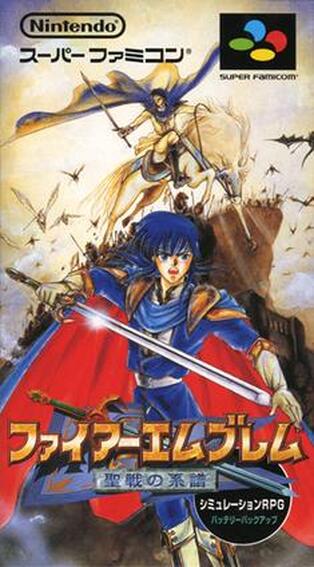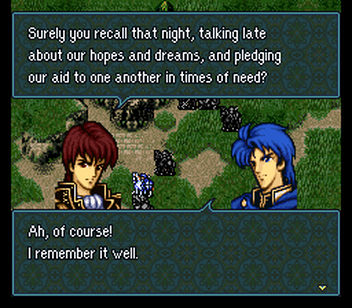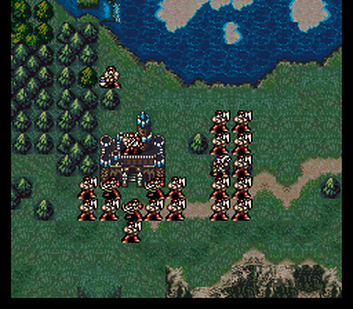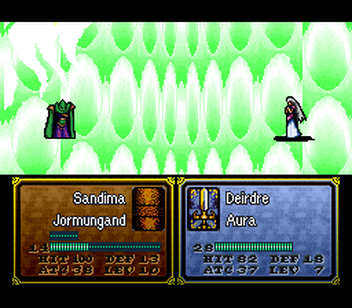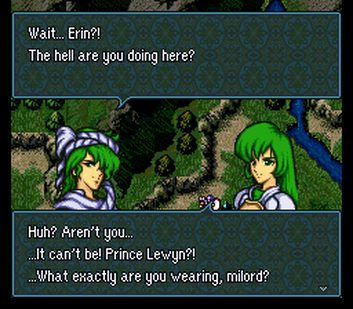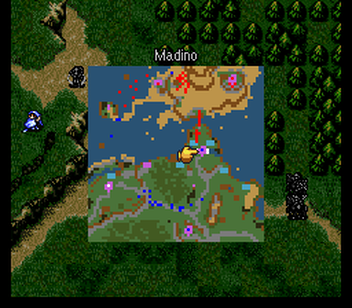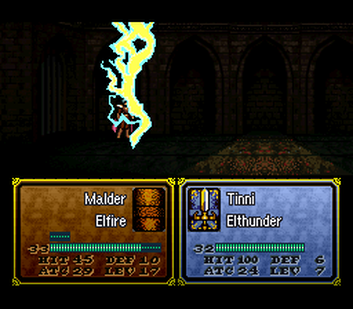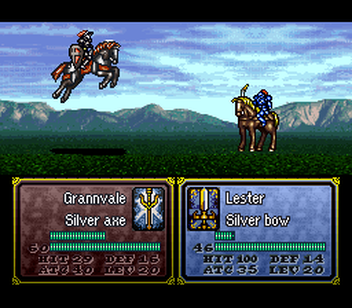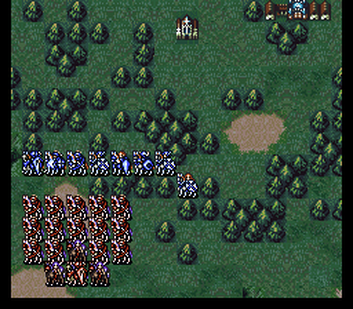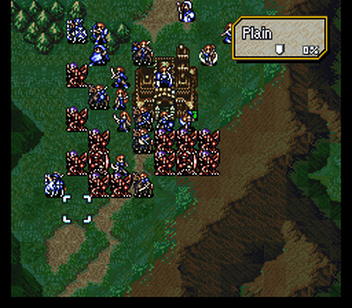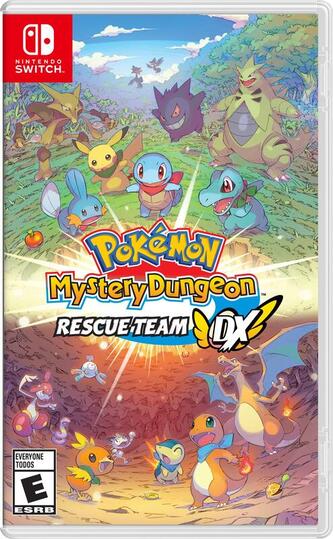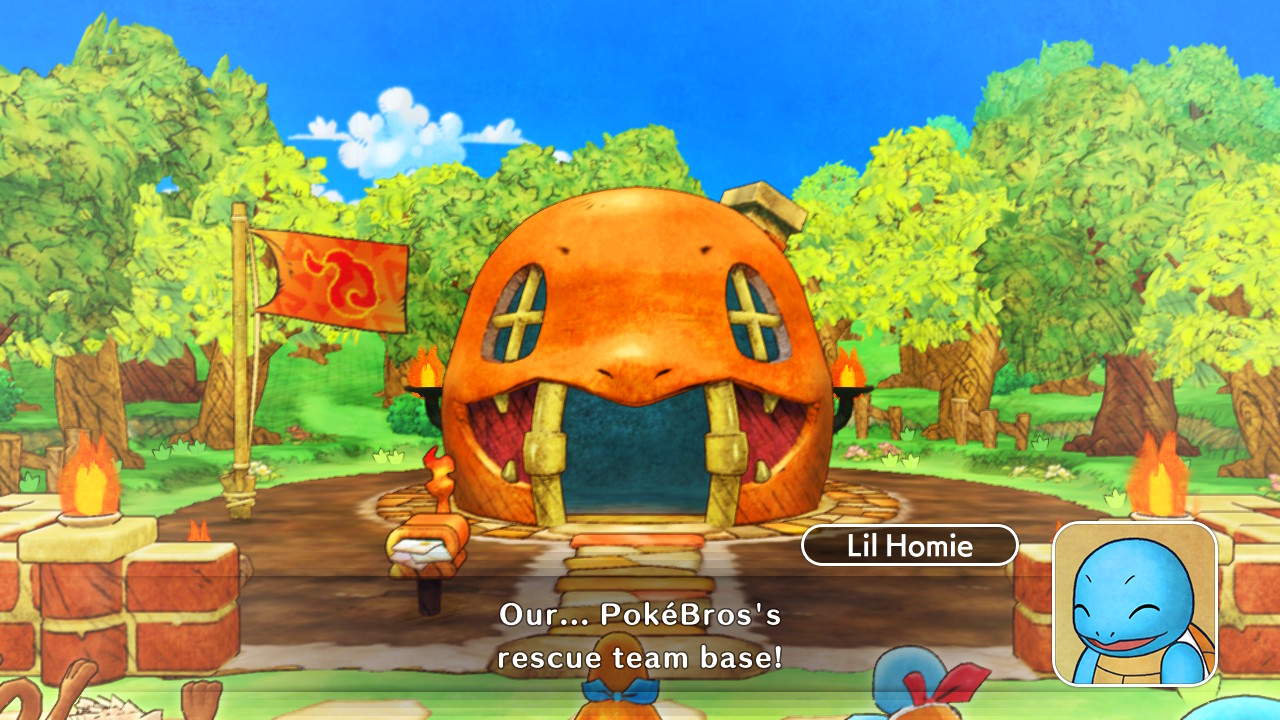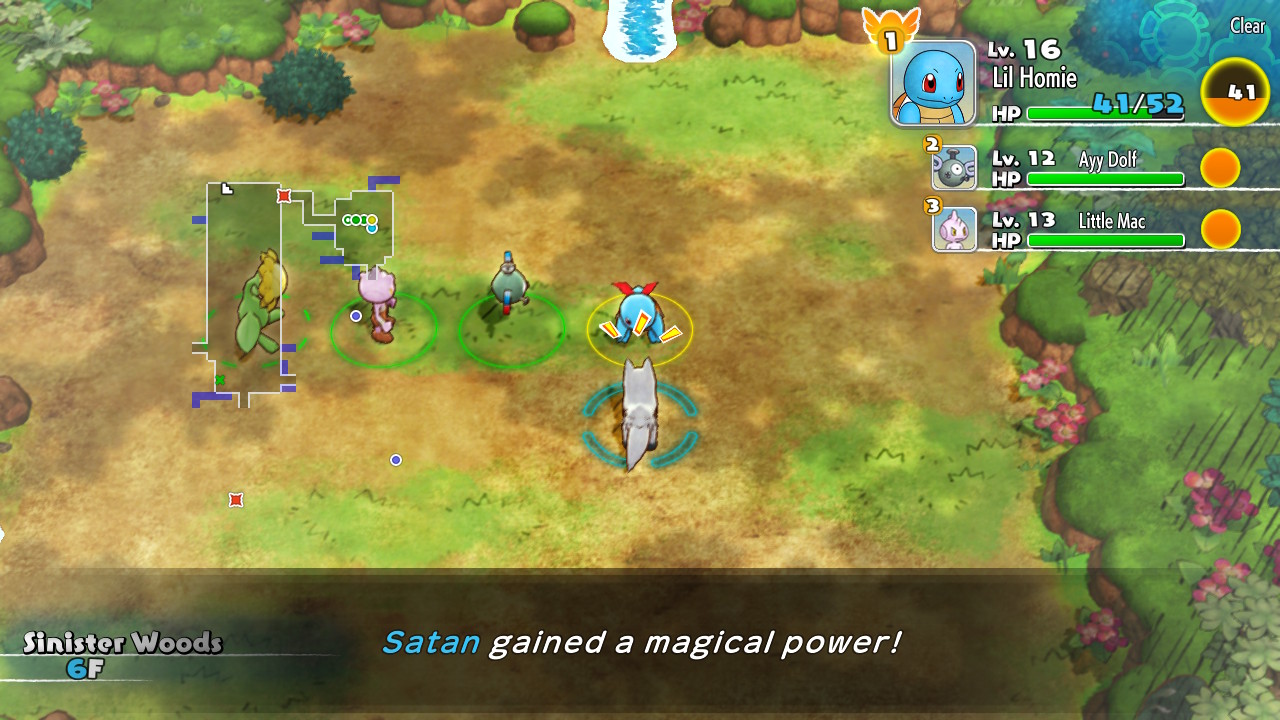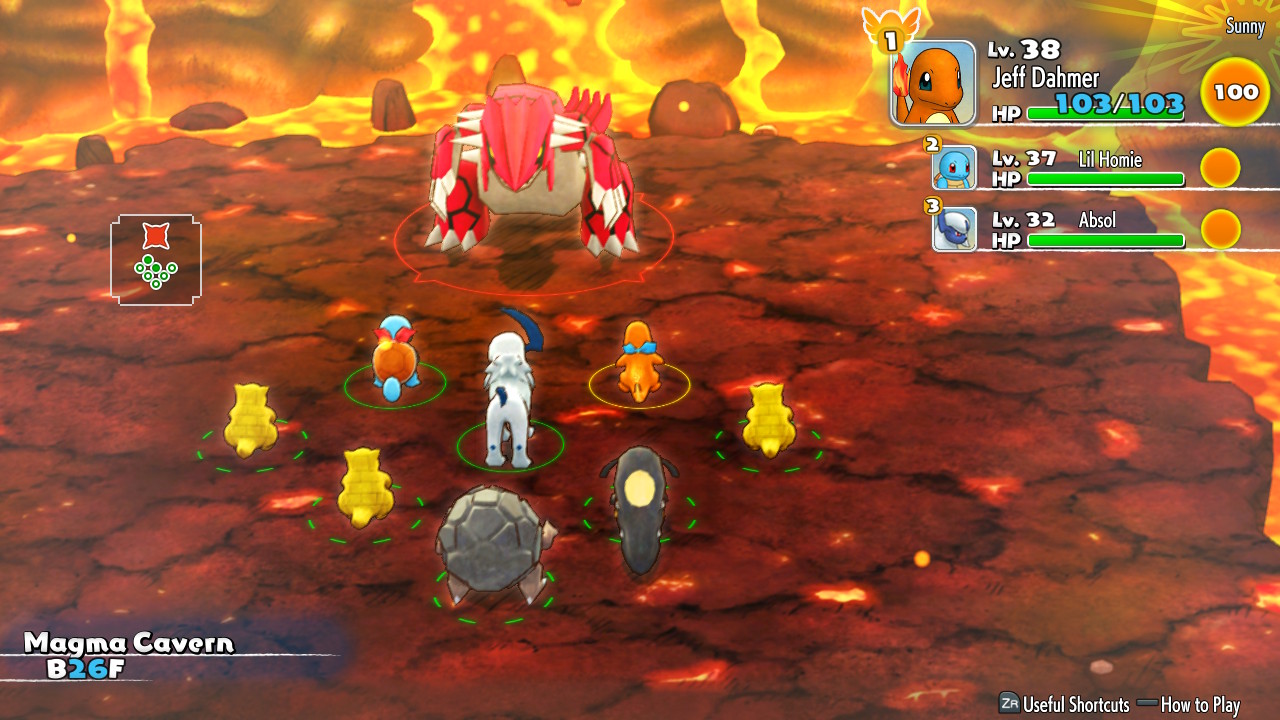1. ACA NeoGeo: Cyber-Lip (Switch eShop)
2. Pengo (Atari 2600)
3. Kirby's Epic Yarn (Wii)
4. Knights of Xentar (PC)
5. Hoshi o Sagashite... (Mark III)
6. Dead Zone (Famicom Disk System)
7. Samurai Sword (Famicom Disk System)
8. High School! Kimengumi (Mark III)
9. Princess Tomato in the Salad Kingdom (NES)
10. Sindbad Mystery (SG-1000)
11. Steins;Gate (Vita)
12. Champion Boxing (SG-1000)
13. Squidlit (Switch eShop)
14. Skyblazer (SNES)
15. Tokyo Dark: Remembrance (Switch eShop)
16. Bubble Bobble (Famicom Disk System)
17. Steins;Gate Elite (Switch)
18. Johnny Turbo's Arcade: Joe and Mac Returns (Switch eShop)
19. Johnny Turbo's Arcade: Express Raider (Switch eShop)
20. Alex Kidd in the Enchanted Castle (Genesis)
21. Sword of Vermilion (Genesis)


Along with Phantasy Star II, Sword of Vermilion is one of the earliest Genesis RPGs. Arriving at the tail end of '89 in Japan, the game saw a Western release a little more than a full year later. While PSII boasts a wild and memorable science fantasy setting, Vermilion is yet another "medieval" RPG with an 8-bit tier storyline. Apparently Yu Suzuki and his AM2 team were involved in the game's development, which is a touch amusing. Yu Suzuki is of course known for his radical in-your-face fast-paced arcade titles. And Sword of Vermilion is... slow. So slow.
The story is clunky and mostly abandoned after the first few hours, in favor of a seemingly never-ending series of fetch quests. Essentially, in the olde days two kings, Erik and Tsarkon, were keepers of a cluster of magical rings. Like the fabled Triforce, these rings could corrupt those who were weak in composure and restraint. Tsarkon, fallen under the rings' spell, invades the kingdom of Erik, razing it to the ground. Erik entrusts his infant son to a warrior, who raises the child as if it was his own. Once the baby is grown he becomes... well, whatever name the player assigns him, the destined hero of Sword of Vermilion, eternally vowing revenge on Tsarkon. It's interesting how the Japanese and North American game boxes both made a point to display the hero alongside a valiant steed. Aside from the game's opening cutscene, not a single horse makes an in-game appearance.
Reviewing this one is a challenge. Though Sword of Vermilion is ostensibly an "action-RPG" it's actually a bizarre amalgamation of several disparate gameplay styles. First, we have "town mode." The hero visits many such towns along his journey, which are presented in the standard top-down console RPG format. I'm rather fond of these towns. Though all are admittedly similar, they're detailed and exude a gloomy melancholic atmosphere. Such locales are rife with NPCs, all ready to spew forth some semi-helpful hastily-translated late 80s gaming soundbites. The "people sprites" are simplistic, but also large and properly proportioned, similar to what would be seen in Phantasy Star III. The town music is also excellent: the best in the game, really. There's a fine attention to detail, and separate themes are allotted for the shops, inns, churches, and castles that litter each village.


One step out of town and suddenly Vermilion feels like a totally different game. Both the overworld and dungeons are presented in a first-person view with tank controls: that is, the up button moves the hero forward, down causes him to walk backgrounds, and left and right initiate a 90 degree turn in said direction. It's such a jarring transition: oftentimes I found myself accidentally walking backwards right back into the town that was just exited, as I didn't immediately acclimate myself to the newfound control scheme! Alongside the main first-person display is a very large top-down "map" -- it's quite similar to the interface seen in The Bard's Tale (NES). Overworld maps are received piecemeal, usually from accommodating townsfolk. Those who lack confidence in their first-person navigation skills (oh hi there) can thus opt to simply look at the maps instead whilst moving. "Caves" (the only type of dungeon in the game) are numerous, and adhere to the same rules, except here maps are found in treasure chests: typically one per floor.
The big problem, which becomes readily apparent a few hours into the game, is how repetitive the whole affair is. The overworld never changes: nothing but a massive sea of green grass comprised of narrow "corridors" flanked by (slightly darker) green trees and brown pillars. Every single dungeon is plain brick and gray walls. "Surely the whole game can't be like this!" I hear the protests, "Even Dragon Warrior ended with a grand final castle!" Oh how I'm afraid to report that the final dungeon of Vermilion looks exactly like the first one; it's just longer and exponentially more annoying.
Of course, redundancy in RPGs is as old as time, and not inherently bad. After all, wasn't Wizardry nothing but a single massive dungeon? Indeed, but while the likes of Wizardry break from repetition via a series of highly strategic battles, Vermilion promises no such reprieve. Instead, prepare for mindless button-mashing. The skirmishes here are, at least on paper, somewhat interesting at first glance. Vermilion eschews turn-based combat in favor of real-time top-down arena style battles, similar to those seen in Esper Dream, Minelvaton Saga, Kalin no Tsurugi, and other 8-bit RPGs no one in their right mind would ever play. Basically, the hero is dropped dead-center surrounded by a random number (up to eight) of identical enemies. The combat controls are unacceptable. Pressing C allows the hero to swing his sword, but the animation is stiff and nigh identical to that of a simple walking animation. Frantically tapping C is the most effective strategy, but expect to lose some HP in the process. Oddly, should one feel overwhelmed it is possible to run from every single battle by simply walking off the edge of the screen.


Enemy attacks are mostly brainless (they simply move closer to the hero via the shortest route possible) and while some monster sprites are admittedly striking, the effect wears off once the same fiends have been revisited a trillion times. And yes, the game is fond of palette swaps. Battles are initiated randomly, and at an extraordinary frequency. The overworld, dungeon, and battle musical themes are all pleasant enough, though don't expect to ever hear one of these tunes play for more than ten seconds at a time. Combat is so persistent that the game rarely feels aggressively "grindy" and the experience level cap is a nice clean level 31. Magic (eventually) ameliorates some of the battle tedium, simply by allowing the player to vanquish foes faster. There's homing types of magic obtained about halfway through the journey, which transforms battles into mash-C affairs to mash-A affairs. As such, it's easy enough to power-level early on and then bail on all fights for the remainder of the game. I must have fled from the final 200+ skirmishes.
Boss fights are downright bizarre. They make for the most impressive screenshots and were thus used in the "What Nintendon't" advertisements. Sorry Sega, but after slogging through these confrontations I'd rather "don't" than "do." Here we have the fourth and final game mode. Bosses are absolutely gigantic and fought in a sideways manner. The hero now dons a suit of armor, which is fitting as he's stripped of all other faculties. Magic is disallowed during boss battles, as is jumping or even turning around! The only options remaining are to thus walk forward, walk backwards, duck, or swing a sword. It's vaguely reminiscent of one of those early fighting games -- one of those found on European computers that played like absolute crap. In any event, the bosses look incredible. Vermilion perfected the "ugly dragon" look years before Bahamut Lagoon. There are additionally demons, necromancers, the occasional cyclops, and a truly heinous final villain. Unfortunately, big sprites mean slow clunky movement. Some bosses, like the dragons, are mostly stationary, offering up little resistance whatsoever. Those that move do so as if they're attached to puppet strings, being "dragged" from one area of the screen to the next. Most annoyingly, other rely on projectiles which are nigh impossible to avoid. It all leads to some serious uneven difficulty, with some bosses toppled easily with the mash-C method, while others require the player be at a high enough level to weather the impending unavoidable beating.
I'd be remiss to not mention the massive amounts of "trolling" found within the world of Vermilion. There are NPCs that outright steal from the player (and being victimized and then revisiting a certain thief is the only way to obtain the game's strongest weapon). There's a specific inn that decides to charge an exorbitant price should one choose to stay at it before liberating the town. Other towns have no inns whatsoever. Inventory space is severely limited. This boils over towards the end of the game, where several very specific keys are required to navigate the final dungeon. Most famously, the game contains several pieces of cursed equipment which permanently lower stats, even if equipped just once. However, anyone who's familiar with the way "numbers" work in older video games will know that equipping such items repeatedly will cause stats to fall below zero and then "roll back" to the max of 9999. Use and abuse this trick at your leisure; it makes the game significantly more bearable.
Sword of Vermilion has a smattering of intriguing ideas, but makes for a questionable final product. And with a twenty hour runtime the game does way more than overstay its welcome (though the back of the box famously and hilariously claims "hundreds of hours"). Phantasy Star II is, admittedly, probably just as tedious, but that game had much cooler aesthetics. Vermilion is a "chip away at it" RPG for those with a patience of a monk and a copious number of vacation hours. And yes, to reiterate, the best part of the game is the towns, which is probably the most insulting thing I could write in an RPG review.

